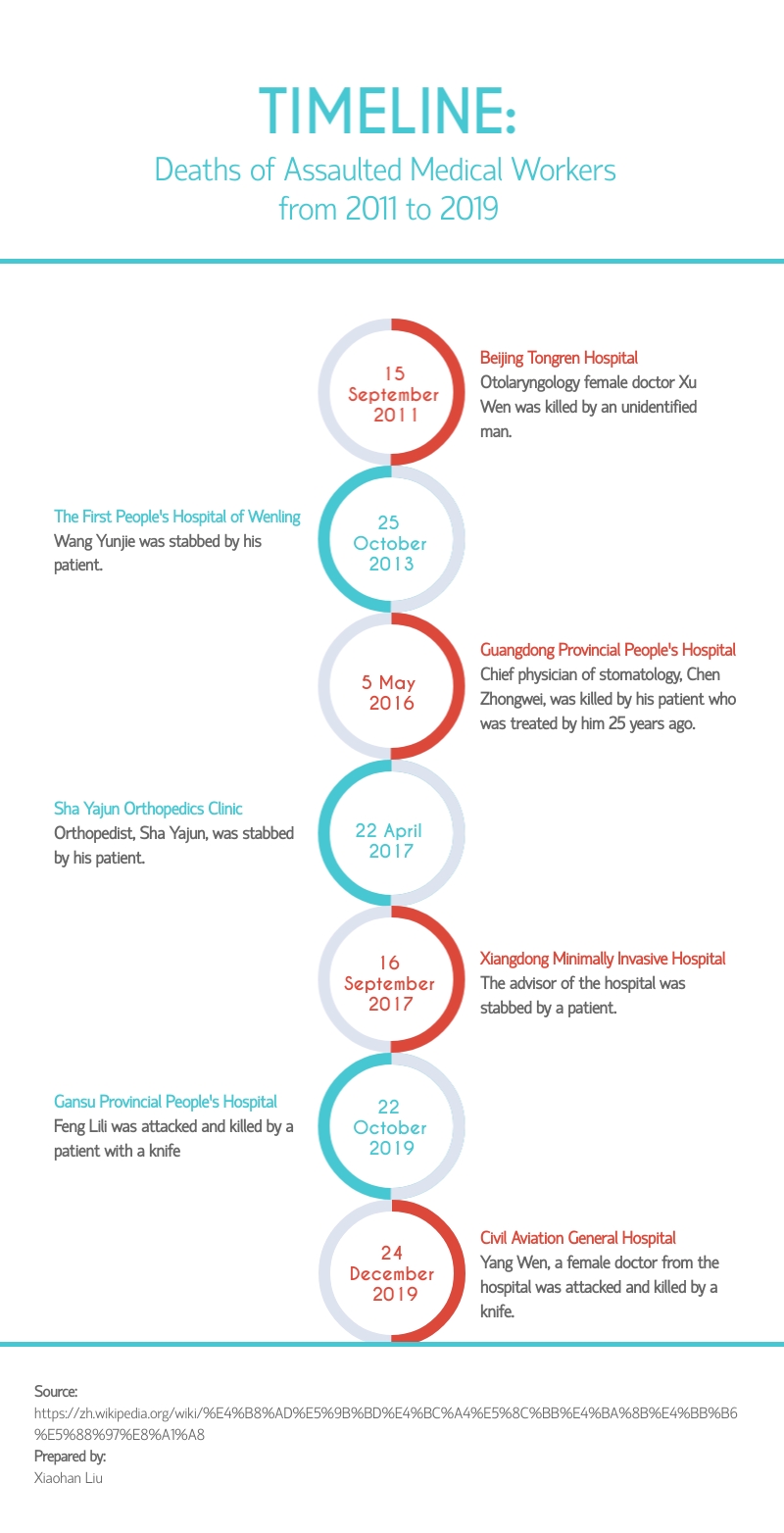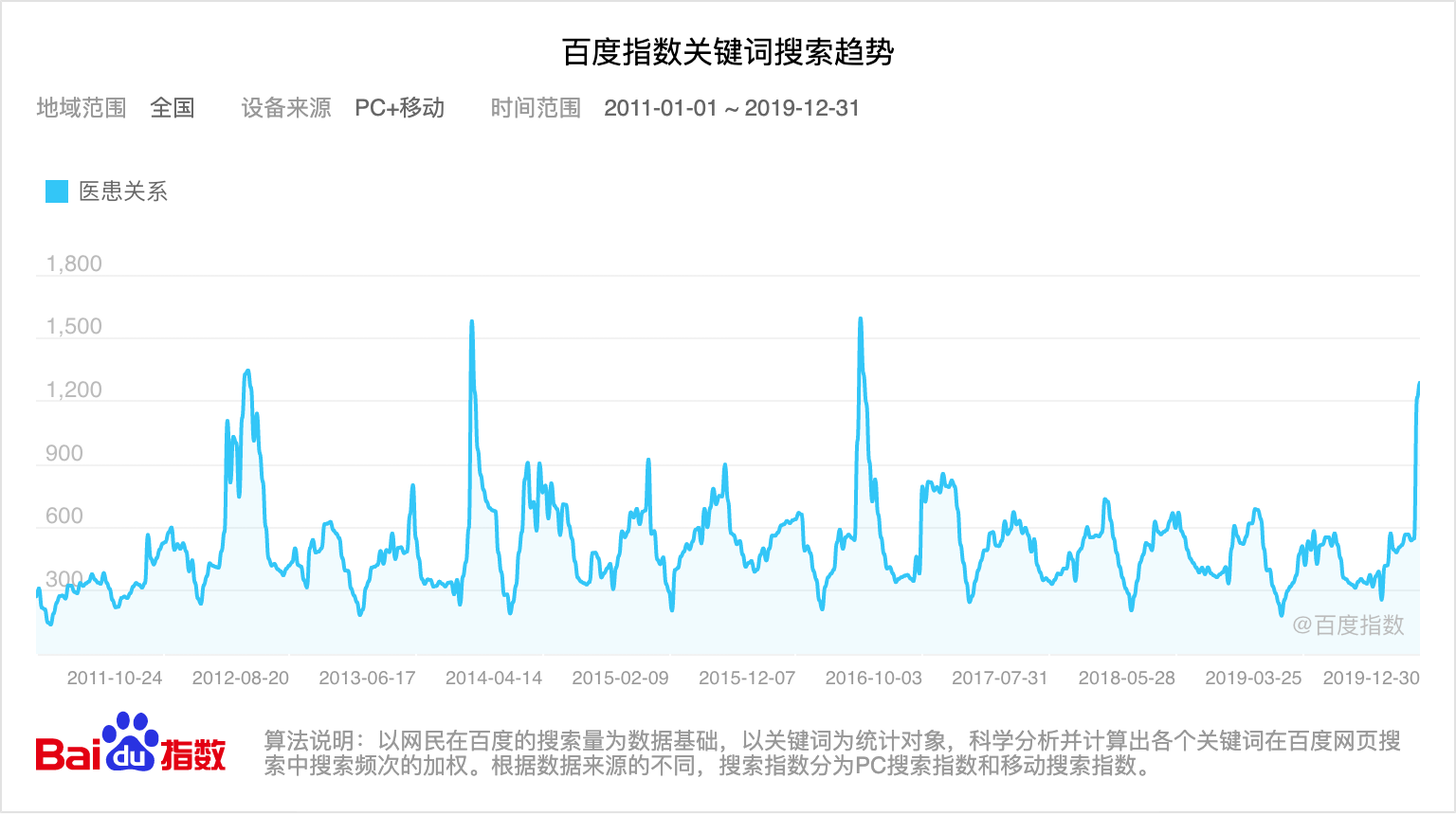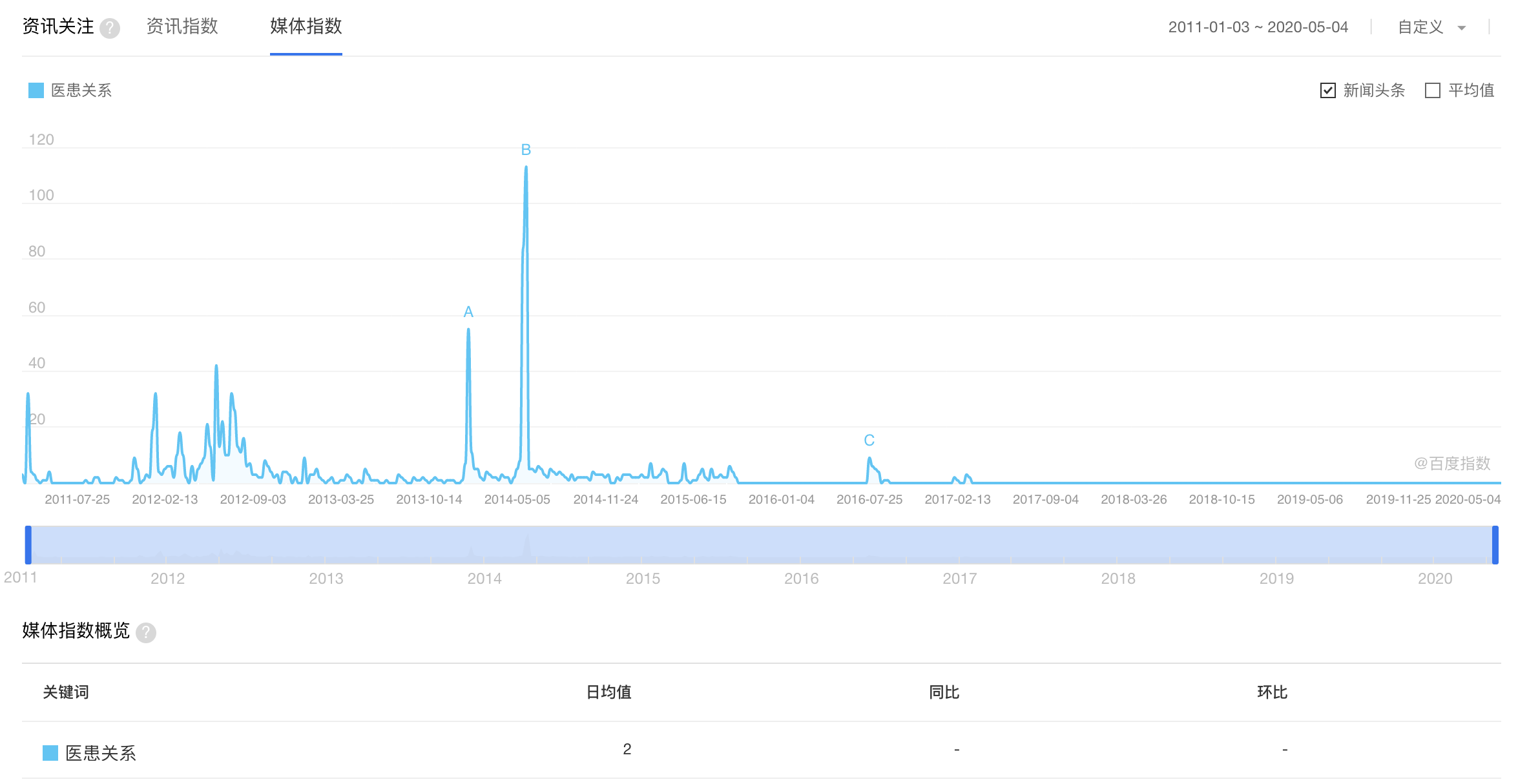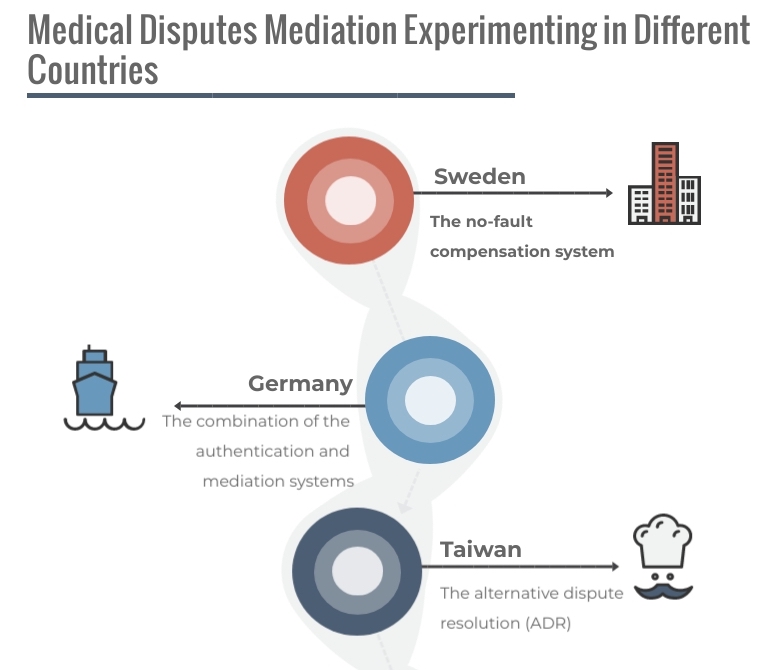
The string of attacks on the medical staff, especially on doctors, cause
a wave of outpouring anger among the public. On 28 December 2019,
China’s first fundamental and comprehensive law on basic medical and health
care services was approved by the Standing Committee of the National People’s
Congress. The proposed law would be executed from June 1st, 2020. It emphasizes
that the whole society should make every effort to protect the medical
staff from violent attacks and anyone who breaks the law would receive
strict punishment.
Villion, who is a lawyer, explains that the new law mainly serves as a
deterrent, as there are no differences in sentencing before and after the
execution of the law.
Another lawyer, Wang Dong Mei, who is a member of the NPC as well, explains
that “the violent behaviors against physicians and nurses are definitely
criminal cases. The criminal law is used widely in these cases as an after-event
penalty. But what urgently needed is the law and regulation for beforehand
prevention. That's the effect of this new set of regulations.”
On March 26, 2020, a new regulation of the security management in hospitals
in Beijing was submitted to the Standing Committee of the NPC for hearing.
The regulation rules that all the hospitals in Beijing should set police
rooms to protect the safety of medical staff. At the same time, it specifies
behaviors that are prohibited in hospitals, like assaulting medical personnel
and carrying knives and flammable and explosive materials. Thus the regulation
can protect the safety of the medical staff on an institutional level.
“Reflective measures that have been taken in Beijing are influential for
the whole country since it is the political and economic center of China,”
said Wang.
Pudding, a medical supervisor who works for a medical company, shows his
negative attitude toward the targeting legislation. He thinks the point
is the enforcement of the law, but not the legislation. “Taking drunk driving
as an example, everyone knows it’s illegal, but only after the drunk drivers
are arrested strictly, people begin to attach importance to it.”
For Mrs. Mu, the mother of an 8-year-old girl, her thoughts are different
from doctors. Shen thinks for patients and their families, sometimes they
are vulnerable groups compared to doctors and other medical staff in some
cases.
She told about the experience of her daughter who has been taken to a
hospital in Zhejiang Province after feeling collywobbles for a long period.
“I didn’t mean to find fault, but I was really annoyed by what the doctor
did at that time,” said Mrs. Mu.
Facing the tough and emergency situation, anxious parents chose to register
a relatively more expensive specialist to prove the accuracy of diagnosis.
Their daughter was diagnosed with a kind of stomach disease.
After two weeks of observation and taking medicine, the girl did not take
a turn for the better, so the parents took the girl to the other doctor,
Chen, to check. But Chen refused to add a quota contemporarily for the
girl despite she was her patient. At the same time, she agreed to add a
quota for the other patients. In addition, the doctor rebuffed the demand
of parents that she would explain the reason for the symptom.
Mrs. Mu was enraged by the situation and complained to the relative bureau
of the hospital. However, her complaint received no response. The security
department of the hospital told Mrs. Mu that the doctor had the right to
decide if she would add a quota for someone. “But I think she didn’t treat
my daughter equally,” said Mrs. Mu, “since she chose to add a quota for
the other patient while my daughter was waiting there.”
Liu is another person who complained about her experience of seeking medical
advice during the outbreak of COVID-19.
She has suffered from slightly breathing difficulties for a long time.
In February, after the outbreak of COVID-19 took a turn for the better,
she went to a tertiary hospital in Dalian and booked a doctor of respiratory
medicine department.
After waiting for about 1 hour, she entered the inquiry room and saw the
doctor. She described her symptoms to the doctor detailedly, but only received
a query from the doctor.
“You are really young. I don’t think you may have some illnesses.” said
the doctor. But she did not elaborate on the reason for her symptoms. “Maybe
you just lack practice.” The doctor thought for a while and made a conjecture
without any substantive suggestions.
Under Liu’s repeated requests, the doctor agreed Liu do chest radiography.
Another two hours of waiting passes, when Liu brought the chest radiography
and reported back to the doctor, the doctor did not even check the X-ray
film.
“She just read the report sketchily and concluded that there’s nothing
wrong with my respiratory system.” said Liu, “I was a little annoyed not
because I didn’t get any effective diagnosis, but it is because she didn’t
treat me with any graveness. She concluded that it was my anxiety that
made me uncomfortable without checking my chest radiography.”
Liu still suffers from chest distress and shortness of breath until now.
Cases mentioned above are what sometimes could happen during and after
the treatment. Two different systems of thoughts exist in doctors’ and
patients’ minds, which cause contradictions between them.
Medical dispute cases emerge after incidents happen and patients usually
have two solutions, legal approach, and compounding.
The number of medical disputes cases recorded in
Chinacourt rose from 24 in 2009 to 3511 in 2019, which is 146 times larger
than that in 10 years ago. Although in recent 4 years, the number does
not see a noticeable increase, the difference in the level of magnitude
still shows a dangerous signal.
“That may be related to the ever-increasing legal awareness of people,
but the conflicts between doctors and patients is the main reason.”
Compounding is the other way for patients and their families to ask for
compensation from hospitals. Li Bo, a sociologist studying mediation
systems for medical disputes, states that patients who are in poor conditions
are more likely to adopt compounding as their solutions since legal proceedings
always require high costs of time and money.
The rising number of conflict incidents between doctors and patients
indicates a noticeable issue that the doctor-patient relationship in China
is stuck in a dilemma.
The doctor-patient relationship plays a vital role in health care practices
and is a crucial part of the foundations of contemporary medical ethics.
The ever-existing cases of medical disputes between doctors and patients,
no matter the violence against doctors or patients’ sue toward hospitals,
reflect a cruel but realistic problem, the relationship between medical
staff and patients is long-lasting and even has the trend of deteriorating.



